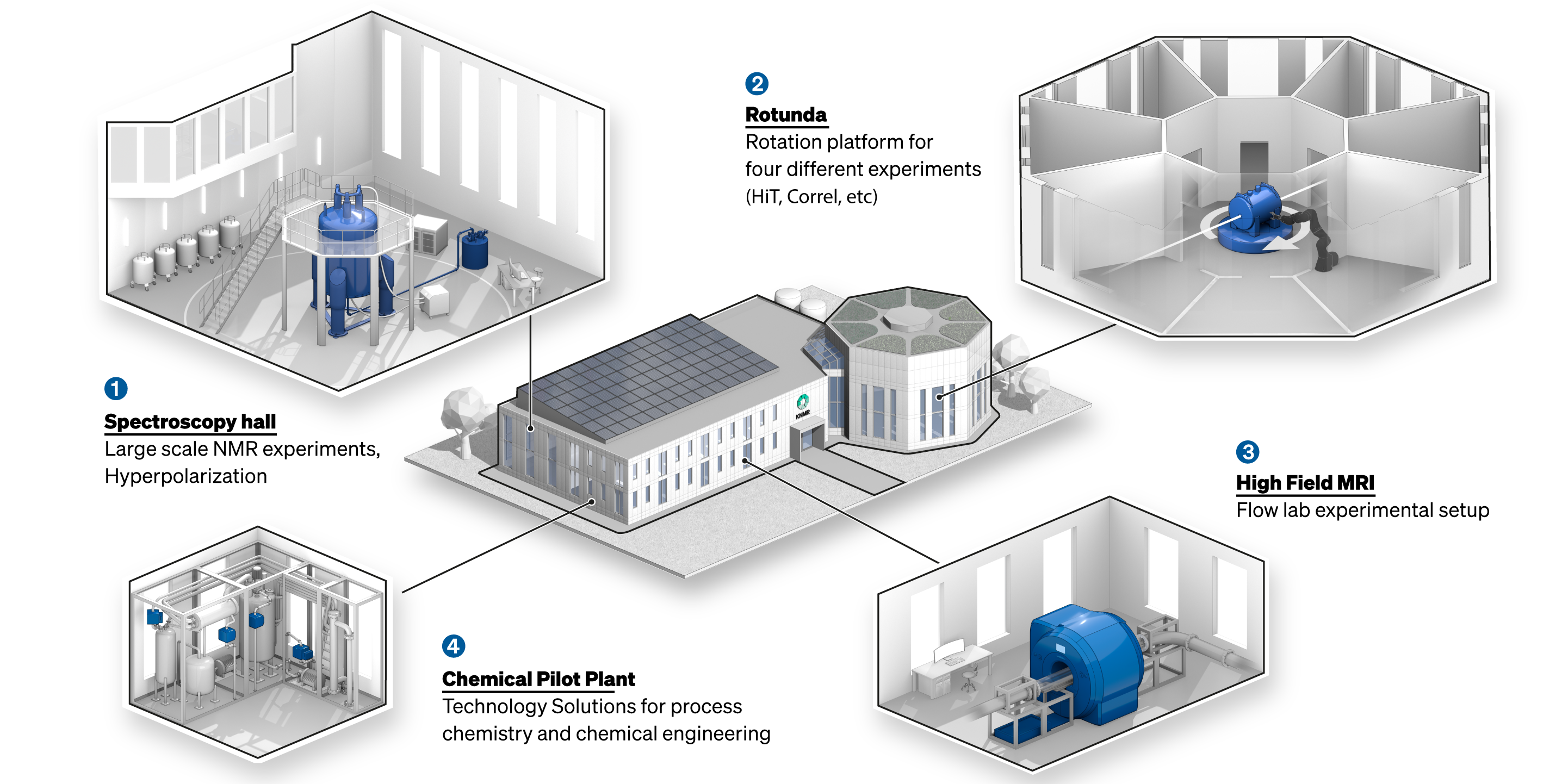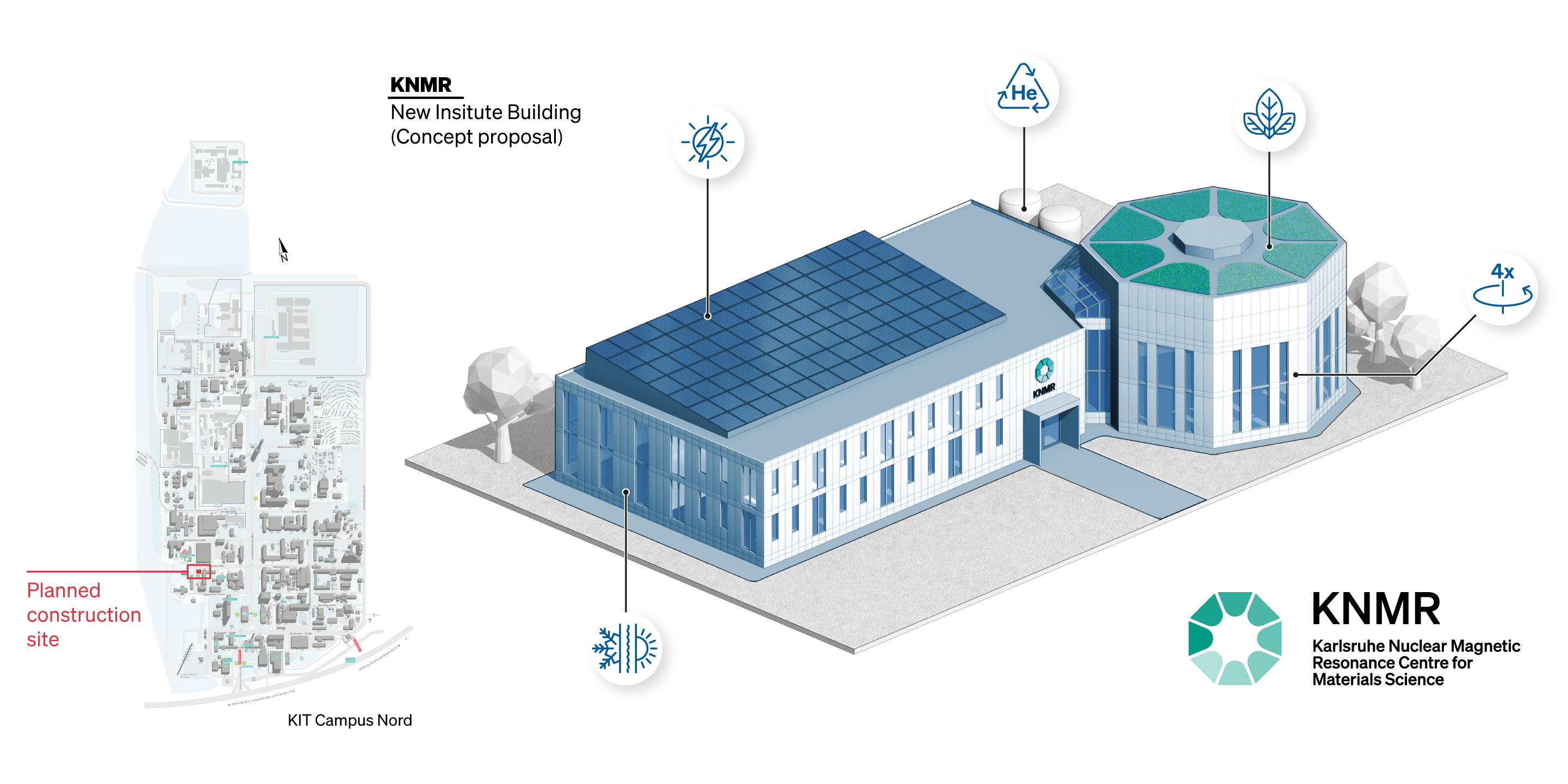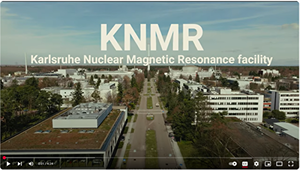Karlsruhe nuclear magnetic resonance facility (KNMR)
The Karlsruhe nuclear magnetic resonance facility (KNMR) will be the premier infrastructure in Germany for the characterisation of materials using magnetic resonance. Through its state-of-the-art instruments, it will offer scientists 6 unique experimental platforms which will enable the most comprehensive digitalisation of material information, covering fundamental quantum-mechanical structure, chemical synthesis, and operando behavior both under extreme operating environments, and dynamically under flow and catalysis conditions. Its instruments will be the best of their kind, including the world’s highest field superconducting NMR magnet at 35 Tesla, the world’s highest field parallel NMR screening platform at 18 T, and a correlative platform joining X-ray imaging with MRI, also at 18 T. Its large volume fluid dynamic platform at a record 7 T field strength will host a critical diameter MRI-compatible catalytic chemical reaction vessel, and its chemical production platform will host the world’s first fully instrumented chemical pilot plant, equipped with 25 networked 1.5 T NMR spectrometers simultaneously observing the process, combined with conventional process sensors, providing the first comprehensive molecular view of a chemical manufacturing facility. All instruments will feed their results into the KIT data repository, via fully digital laboratory notebooks, and will be supported by deep learning capabilities that drive, interpret, and learn from the experiments running at the centre. Thus, KNMR will be the first fully digital analytical materials science facility at KIT, combining detailed analysis with insight into dynamical processes. KNMR will house KIT and visitor scientists, and in a public private partnership, will host national industry teams addressing challenges at the interface between academia and industrial application.
KNMR will be a research infrastructure embedded in KIT in which leading PIs are pioneering NMR research, and will be open to internal and external user research groups dedicated to equipment development and augmentation, method development, and experimental application in academic and industrial research. KIT scientists have advanced most of the magnetic resonance-relevant technological areas, from ultrafast high frequency electronics, opto-electronic data transmission rates above 1 THz, low temperature superconductive magnet technology, compact gyrotron technology, DNP bullet technology, NMR detector miniaturization and integration, as well as quantum simulated pulse technology. With this expertise, KNMR will advance NMR to new paradigms in both technology and applications spaces making it highly attractive to young research groups as well as established teams aiming to leverage the new measurement capabilities for their research challenges.
KNMR Image Video:
Shaping the Future of Magnetic Resonance at KIT: The Karlsruhe Nuclear Magnetic Resonance Facility - Link to the film in YouTube
Experiments planned at KNMR:
A selection of the highlighted planned infrastructures, including: 1. The spectroscopy hall consisting of the high-field, vertical-bore and associated hyperpolarization NMR systems; 2. the rotunda, consisting of an MR system on a rotation platform servicing the high throughput (HiT) and correlative characterization (Correl) activities; 3. a large-bore, high field MRI instrument for large-diameter reaction characterization; 4. a chemical pilot plant, featuring highly networked chemical reaction sensing systems.

Planned location and features:
KNMR is planned to be a new building located at KIT Campus North. As part of our commitment to sustainability, the new facility will feature renewable energy source installations, helium recycling systems for the superconducting magnet systems, and a time-shared use of one of the horizontal bore NMR systems servicing multiple experiment types.



